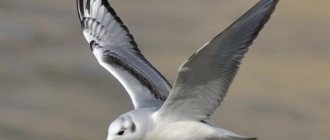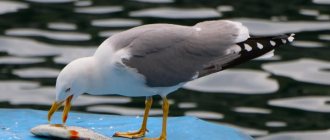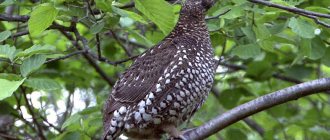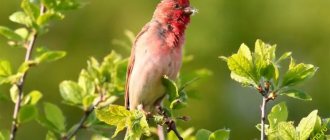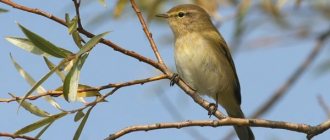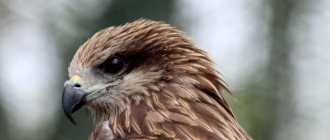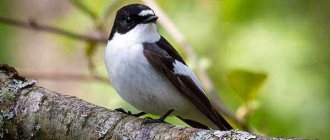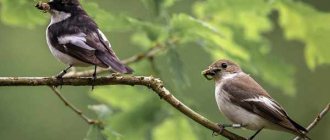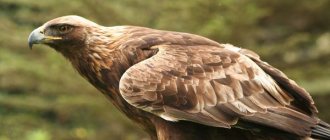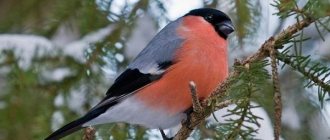The pink gull is a bird that forms the only genus in the gull family. This small, charming bird is a resident of the Arctic.
In order to breed, the pink gull chooses places in the lower reaches of northern rivers. On the banks and islands of deep rivers - Yana, Indigirka, Kolyma, Anadyr, which flow into the Arctic Ocean, these birds make nests for themselves. Its home is Lake Taimyr, as well as the adjacent tundra.
Pink gull (Rhodostethia rosea).
The usual habitat of the pink gull in summer is tundra and forest-tundra. Birds of this species love to settle on the west coast of Greenland. In the colder period of the year, the bird flies from the tundra closer to the sea coast. In winter, it can be seen in the Bering and Norwegian Seas. Representatives of this species of gulls love to travel throughout all ice-free spaces of the Arctic coast.
Seagull's appearance
With a body length of 35 cm, the pink gull weighs 250 grams. The upper part of the wings and the back are gray-gray.
The head of the small bird is pale pink, almost white, the breast is pink, the legs are red, and the beak is black. During the summer period, the gull's neck is decorated with a narrow black stripe, which disappears in winter. The bird's tail is wedge-shaped. The pink gull usually lands on ice floes at sea, rather than on the water, due to the low water temperature. However, she swims happily in river water.
Number:
An expert estimate of the size of the reproductive part of the world population is at least 50 thousand pairs, based on which the total number of the species may be 150–200 thousand individuals. Given the wide distribution and commonness of the pink gull in the Bering and Okhotsk seas in the winter and spring, it is assumed that a significant part of its population spends the winter here. There are no specific substantiated conclusions about the number in the Kamchatka region. In general, the species is quite common in Kamchatka waters, especially during spring migration.
Sources: tepid.ru , ru. wikipedia.org , hunt-dogs.ru ,
Similar articles:
Red Book of the Republic of Sakha (Yakutia). Birds. part 2
…
Capercaillie
The capercaillie (lat. Tetrao urogallus) is a large bird from the pheasant family, the order Galliformes. The name “grouse” is due to the well-known characteristic of the male mating season, which loses sensitivity and vigilance, which is often used by hunters...
Grouse
Black grouse, or black grouse, or field grouse (lat. Lyrurus tetrix), is a common bird of the pheasant family, living in the forest, forest-steppe and partly steppe zones of Eurasia, including in Russia. Throughout the entire range there are sedentary or nomadic birds; settles on forest edges, along the edge of the forest, in the valleys of large rivers. Object of hunting...
Wintering birds of Yakutia
The nature of Yakutia is beautiful and harsh. Our republic occupies more than three million square kilometers. A wide variety of landscapes are found on its territory. And besides, there is a rich fauna of birds and mammals inhabiting Yakutia. The avifauna of Yakutia is represented by more than 291 species of birds, and the winter avifauna is represented by 48 species. And winter in Yakutia is long and fierce. There is no other place on the planet where the amplitude of temperature fluctuations would reach one hundred degrees: frosts in the sixties, heat in the forties. Such a harsh climate does not frighten...
Siberian Crane
The Siberian Crane, or white crane (lat. Grus leucogeranus) is a species of crane endemic to the northern territories of Russia. Siberian cranes are endangered and are included in the international Red Book of the International Union for Conservation of Nature and the CITES Convention on International Trade, as well as the Red Book of Russia...
Character and lifestyle of the pink gull
The pink gull lives in the tundra and forest-tundra. However, it is attached to a permanent place only during the nesting period; the rest of the time the bird flies freely over the sea, landing to rest on drifting glaciers.
To build a nest, the seagull chooses a place in overgrown swamps or near rivers and carefully weaves a small nest there from grass and small twigs. The pink gull spends the harsh winter near its nesting sites near the open sea. Birds group near non-freezing areas of water and feed on its gifts in winter.
It is worth noting that the behavioral characteristics of pink gulls have not yet been fully studied due to the complexity of the climate of their natural habitat, as well as due to the excessive timidity of these birds. That is why the description of the pink gull is often based on the assumptions of scientists based on the habits of ordinary gulls.
Bird migrations occur far from the coast, which makes this phenomenon also practically unobservable. However, if we put together the scattered attempts of various scientists to study the behavior of birds into one picture, we can conclude that the pink gull leaves the nesting area in early August. Birds of different ages take to the air and fly away in all directions, heading north.
Thus, during the migration period, gulls spend most of their time on the move. Strong winds and storms can blow individual individuals away from the chosen direction, but such cases are rare.
- 100 facts about bears
- Jungle animals
- Saber-toothed tiger
- 50 facts about kangaroos
- long eared hedgehog
- Cross spider
Description [edit | edit code ]
Body length is about 35 cm. The back and upper wings are gray-gray, the head, chest and abdomen are pink, and there is a narrow black collar on the neck. The beak is black, the legs are red. The tail is wedge-shaped.
The flight of the pink gull is light, reminiscent of the flight of terns. In relation to humans, the bird is usually a little cautious and trusting. At sea, it mainly rests on floating ice floes, but in the tundra, on lakes, the seagull often lands on the water and even swims.
Vocalization [edit | edit code]
The voice of this species is much higher and more tender than that of other gulls, and is characterized by great variety. Most often a cry like “uh, uh” is heard; when frightened, they utter a short cry “vya, vya, vya,” if they are very worried, “kiau-kiau,” and when attacked by another gull of the same species or a tern, they cry “e-dak, e-dak.”
Food [edit | edit code ]
It feeds on insects, small mollusks, and during the migration period, fish and crustaceans.
Reproduction [edit | edit code ]
The pink gull nests in the tundra and forest-tundra along the shores of lakes in Eastern Siberia in the deltas of the northern rivers - Yana, Indigirka, Kolyma, Khroma. A small settlement (several dozen couples) exists in Taimyr. The nesting sites of these birds are in wet lowland tundra and forest-tundra, often on the islands of numerous lakes. There are 3, rarely 2 eggs in a clutch. Incubates for about 3 weeks.
Nutrition
The diet of this bird includes various insects and small mollusks. And during the period when the pink gull is nomadic, it feeds on various crustaceans and fish. If a bird is at sea in winter, it hunts at some distance from the ice. Sitting on the water, she eats the insects that live in it. If it notices prey swimming past it, then to catch it, it submerges slightly in the water or even dives. If there is insufficient food in the gull’s habitat, it protects its territory from other birds.
Spreading
Distributed in northeastern Siberia (from the Yana River to the western edge of the Chukotka Peninsula) and Western Greenland. In winter, it wanders in the open waters of the Arctic Ocean, penetrating into the North Atlantic and the Bering Sea.
During the migration period, pink gulls sometimes fly far from the places where they nest or winter. Thus, there are known cases of their appearance in the Sea of Okhotsk and the Sea of Japan, Norway, France and Manchuria. Flights to the far south are occasionally recorded (Ireland, California).
Enemies of the pink seagull
From time to time, pink gulls approach people's houses, hoping to profit from something. However, there are also hunters for the small bird. The eggs and chicks of this bird are stolen by arctic foxes, and the eggs are also eaten by reindeer. People are contributing to the extermination of pink gulls. Adults are exterminated because of their original and beautiful plumage. Craftsmen make expensive stuffed animals from hunted birds. In the future, scientists plan to create a nature reserve in the nesting areas of pink gulls.
Description
The body length of adult individuals is 30-35 cm. The wingspan is 80-90 cm, weight is 180-190 g. There is no pronounced sexual dimorphism.
During the mating season, the upper part of the body is light gray, a black collar appears around the neck, and the head and wedge-shaped tail are white. The chest and abdomen become pink. The beak is dark, the legs are red.
The rest of the time, the collar fades and the pink color is replaced by white. Young birds have black and brown spots resembling the letter M on the back and top of the wings.
The lifespan of the pink gull is 10-12 years.
The Yakut people have an old legend about beautiful young girls. Because of their age, thinking that they are not beautiful enough. Like all young girls, they also tended to make mistakes.
And the girls decided that the evil witch, who could not advise them anything good, could cause trouble. She sent the beauties to plunge into the river in severe frosts and said “your beauty will be eternal, and your cheeks will become rosy.”
Reproduction and lifespan
This species arrives at the nesting site in May or early June. The bird's nest is made directly on the ground from dry grass, leaves and moss. There may be up to twenty other nests of this species around the nest, as the small birds live in groups. A pair of pink gulls are very attached to each other and take turns incubating the eggs. The female usually lays 3 eggs and after 3 weeks the chicks are born. This occurs at the end of June or at the very beginning of July. Pink gull chicks very quickly adapt to harsh conditions, quickly take wing and after 20 days they fly no worse than their parents.
When the young generation hatches from the eggs, the birds moult. After it, all the birds fly to the cold sea coast. There the young animals undergo severe hardening. Experts have no data on how long pink gulls live. Approximately, their lifespan is 10-12 years.
ROMANCE IN ICE
In the Arctic, summer is short, and in order to have time to hatch the chicks, not a single day can be lost. Pink gulls begin courtship ceremonies without waiting for the ice to melt on the lakes. In family life they are monogamous: couples form a lifelong relationship. The parents share the care of raising their offspring almost equally, although the male spends 1-3 hours a day more on the nest than the female. In the Yana-Indigirka Lowland, pink gulls lay eggs between June 6 and June 19. However, in the cold summer they can postpone this important task to a later date, and in the event of prolonged bad weather, they can completely abandon reproduction. The pink gull's nest is usually located on a hummock in the middle of the water and is a hole dusted with dry sedge, lichen or moss. The clutch contains 2-3 dark olive eggs, from which chicks weighing about 15 g emerge after 20 days. Although from the third day they can look for food on their own, their parents feed them 20 times a day.
The main diet of pink gulls consists of insects and their larvae. Both kids and adults enjoy catching mosquitoes, of which there are countless numbers in the tundra. The chicks grow quickly and take wing after 20 days. After this, together with the adults, they leave the nesting grounds and migrate north to the sea, to the pack ice. From this moment on, their diet changes: the gulls switch to small fish and crustaceans, which they catch 2-3 m from the edge of the ice, flying up to the surface of the water, sitting down and immediately taking off. The belief that pink gulls spend the winter in the high latitudes of the Arctic has turned out to be erroneous. Ornithologists have found that at the end of September - October, birds migrate eastward to the Bering and Okhotsk Seas and stay there near the ice boundary until May. Only a small proportion of pink gulls first fly west to the North Atlantic, but in mid-September they all make the return flight to the east.
Unique feature of the bird
In addition to its delicate unusual color, the peculiarity of this seagull is that when winter approaches, it flies not in a southern direction, like all migratory birds, but in the opposite direction - to the endless latitudes of the Arctic Ocean. The fact is that once in ancient times these regions were connected with the warm Gulf Stream (it used to be much warmer there than now), and today, most likely, these birds fly there instinctively.
As water flow conditions changed, a more severe climate arose in those favorite wintering areas of gulls, but pink gulls were able to adapt to such living conditions.
Interesting Facts
- Because of the seagull’s unusual plumage, which has a delicate pink color, it is often called the “dawn of the Arctic Circle.” This was the reason for the decrease in bird numbers. Previously, local indigenous people hunted these birds for food, but this did not lead to significant damage. And when the Arctic became a route zone for numerous tourists, problems began to arise. Many tourists began to take stuffed animals of this wonderful bird with them as souvenirs. It got to the point that tourists gave local residents up to $200 for it, which began to encourage the latter to catch and, accordingly, exterminate these birds. Today, any type of hunting for them is criminally punishable. Slowly the population began to recover, albeit slowly.
- The pink gull is so rare that the discoverers of this miracle bird, risking their lives, searched for it in the cold northern waters, specially equipping expeditions. The first to describe the seagull was the greatest Arctic explorer Fridtjof Nansen. Meeting this unique seagull, which was considered a zoological legend until 1905, was his cherished dream. As a result, in 1905, S. A. Buturlin (Russian ornithologist) discovered the gull’s nesting site and described it in detail as a species.
- The vocal abilities of this species of gulls are superior to many birds of the family in terms of clarity of voice and pitch.
- In 1999, the Bank of Russia issued a silver coin (in denomination of 1 ruble), part of the “Red Book” series. They called it “Pink Gull”, and this charming bird is depicted on it.
Conservation status [edit | edit code]
During years of heavy snowfalls and floods, birds either do not nest at all, or they only have one egg per clutch. As you know, the number of small rodents, lemmings, in the tundra varies greatly from year to year. There are periods when these small animals, the main food of arctic foxes, disappear completely. Then the Arctic foxes eat up literally every living thing in the tundra. First of all, eggs and chicks of various bird species, including pink gulls, die.
Previously, in times of famine, the Eskimos shot pink gulls for food. At the beginning of the 20th century, when American sailors, whalers and sea animal hunters often visited Chukotka, the local population hunted these exotic birds to make stuffed souvenirs. At that time, one specimen of a miniature, unusually colored seagull cost up to $200. Driving herds of domestic deer through colonies and poaching eggs also negatively affect the number of pink gulls. All this, along with the fact that the nesting range of the birds is very limited, causes serious concern for the fate of this species.
Today in Russia the hunting of this species is completely prohibited. Scientists are clarifying the largest nesting sites of the pink gull in order to subsequently introduce a protected regime there.
